iTHEMS Seminar
38 events
-
Seminar
Dynamics of Phase Transitions: Between First and Second Order
October 8 (Tue) 16:00 - 17:30, 2024
Fumika Suzuki (CNLS Postdoctoral Research Associate, T4 / Center for Nonlinear Studies, Los Alamos National Laboratory, USA)
Phase transitions are typically classified as either first-order or second-order. The formation of topological defects in second-order phase transitions is well described by the Kibble-Zurek mechanism, while nucleation theory addresses first-order phase transitions. However, certain systems, such as superconductors and liquid crystals, can exhibit “weakly first-order” phase transitions that do not fit into these established frameworks. In this presentation, I introduce a new theoretical approach that combines the Kibble-Zurek mechanism with nucleation theory to explain topological defect formation in weakly first-order phase transitions. Additionally, I will discuss nonlinear quantum phase transitions that exhibit behaviors similar to weakly first-order transitions, which can be related to experiments with ultra-cold Rydberg atoms.
Venue: Hybrid Format (3F #359 and Zoom), Seminar Room #359 (Main Venue) / via Zoom
Event Official Language: English
-
Seminar

Stringy Nonlocality: Operator Formalism and Implications
July 26 (Fri) 14:00 - 15:30, 2024
Wei-Hsiang Shao (Ph.D. Student, Department of Physics, National Taiwan University, Taiwan)
Nonlocality is a fundamental property of string theory, where point-like particles are replaced by extended strings. This feature is especially evident in string field theories, where field components interact through form factors containing spacetime derivatives of infinite order. The usual approach to canonical quantization is no longer applicable, and thus a non-perturbative treatment of nonlocal effects at the quantum level remains unclear. In this seminar, I will discuss a recent attempt to construct an operator formalism for stringy nonlocal field theories, and explore the potential implications for black hole radiation and primordial fluctuations in the early universe.
Venue: Hybrid Format (3F #359 and Zoom), Seminar Room #359
Event Official Language: English
-
Seminar

Quantum simulation of QCD matter: from hadronic scattering to gauge field qubit encoding
April 3 (Wed) 10:00 - 11:00, 2024
Tianyin Li (Ph.D. Student, Institute of Quantum Matter, South China Normal University, China)
Recently, quantum computing (QC) has become a new method for solving non-perturbative problems in high-energy physics. Compared to traditional Monte Carlo simulations, the QC method does not encounter the sign problem, making it an effective approach for solving dynamical and finite density problems. The first part of this talk focuses on the quantum simulation of the hadronic scattering process, including the initial state parton distribution functions, intermediate state partonic scattering amplitudes, and final state hadronization. The second part of this talk concentrates on the qubit encoding of Hamiltonian formalism in lattice gauge field theory with a Coulomb gauge. As a preliminary attempt, the qubit encoding of (3+1)-dimensional Coulomb gauge QED will be discussed.
Venue: via Zoom
Event Official Language: English
-
Seminar
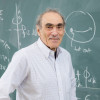
Macroscopic neutrinoless double beta decay: long range quantum coherence
March 6 (Wed) 15:30 - 17:30, 2024
Gordon Baym (Professor Emeritus, University of Illinois, USA)
This talk will introduce the concept of ``macroscopic neutrinoless double beta decay" (MDBD) for Majorana neutrinos. In this process an antineutrino produced by a nucleus undergoing beta decay, $X\to Y + e^- + \bar \nu_e$, is absorbed as a neutrino by another identical $X$ nucleus via the inverse beta decay reaction, $\nu_e + X \to e^-+Y$. The distinct signature of MDBD is that the total kinetic energy of the two electrons equals twice the end-point energy of single beta decay. The amplitude for MDBD, a coherent sum over the contribution of different mass states of the intermediate neutrinos, reflects quantum coherence over macroscopic distances, and is a new macroscopic quantum effect. We discuss the similarities and differences between the MDBD and conventional neutrinoless double beta decay, as well as give estimates of the rates of MDBD and backgrounds.
Venue: Hybrid Format (3F #359 and Zoom), Main Research Building (Main Venue) / via Zoom
Event Official Language: English
-
Seminar
Dust-driven instabilities in protoplanetary disks: toward understanding formation of planetesimals
January 17 (Wed) 10:30 - 11:30, 2024
Ryosuke Tominaga (Special Postdoctoral Researcher, Star and Planet Formation Laboratory, RIKEN Cluster for Pioneering Research (CPR))
Planet formation starts from collisional growth of sub-micron-sized dust grains in a gas disk called a protoplanetary disk. They are expected to grow toward km-sized objects called planetesimals. The resulting planetesimals further coalesce by gravity and form planets. However, there are some barriers preventing planetesimal formation, which includes fast radial drift and collisional fragmentation of dust grains. To circumvent the barriers and to explain planetesimal formation, previous studies have proposed hydrodynamic instabilities of dusty-gas disks. The instabilities can cause dust clumping, and planetesimals form if the resulting clumps collapse self-gravitationally. We have been investigating the linear/nonlinear development of these dust-gas instabilities. We also found a new instability driven by collisional growth of dust, which can bridge a potential gap between the first dust growth and the later planetesimal formation via the previous instabilities. In this talk, I will introduce our work on the dust-driven instabilities and their impact on planetesimal formation.
Venue: Hybrid Format (3F #359 and Zoom), Main Research Building
Event Official Language: English
-
Seminar
Cosection localization via shifted symplectic geometry
December 6 (Wed) 10:00 - 11:30, 2023
Young-Hoon Kiem (Professor, School of Mathematics, Korea Institute for Advanced Study (KIAS), Republic of Korea)
Modern enumerative invariants are defined as integrals of cohomology classes against virtual fundamental classes constructed by Li-Tian and Behrend-Fantechi. When the obstruction sheaf admits a cosection, the virtual fundamental class is localized to the zero locus of the cosection. When the cosection is furthermore enhanced to a (-1)-shifted closed 1-form, the zero locus admits a (-2)-shifted symplectic structure and thus we have another virtual fundamental class by the Oh-Thomas construction. An obvious question is whether these two virtual fundamental classes coincide or not. In this talk, we will see that (-1)-shifted closed 1-forms arise naturally as an analogue of the Lagrange multiplier method. Furthermore, a proof of the equality of the two virtual fundamental classes and its applications will be discussed. Based on a joint work with Hyeonjun Park.
Venue: Seminar Room #359
Event Official Language: English
-
Seminar
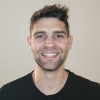
The Cosmic Gravitational Microwave Background
September 6 (Wed) 15:00 - 16:30, 2023
Jan Schuette-Engel (Postdoctoral Researcher, RIKEN Interdisciplinary Theoretical and Mathematical Sciences Program (iTHEMS))
The thermal plasma in the early universe produced a guaranteed stochastic gravitational wave (GW) background, which peaks today in the microwave regime and was dubbed the cosmic gravitational microwave background (CGMB). I show that the CGMB spectrum encodes fundamental information about particle physics and gravity at ultra high energies. In particular, one can determine from the CGMB spectrum the maximum temperature of the universe and the effective degrees of freedom at the maximum temperature. I also discuss briefly how quantum gravity effects arise in the CGMB spectrum as corrections to the leading order result.
Venue: Hybrid Format (3F #359 and Zoom), Main Research Building
Event Official Language: English
-
Seminar
MNISQ: A Large-Scale Quantum Circuit Dataset for Machine Learning on/for Quantum Computers in the NISQ era
August 29 (Tue) 14:00 - 15:30, 2023
Leonardo Placidi (Ph.D. Student, Graduate School of Engineering Science, Osaka University)
We introduce the first large-scale dataset, MNISQ, for both the Quantum and the Classical Machine Learning community during the Noisy Intermediate-Scale Quantum era. MNISQ consists of 4,950,000 data points organized in 9 subdatasets. Building our dataset from the quantum encoding of classical information (e.g., MNIST dataset), we deliver a dataset in a dual form: in quantum form, as circuits, and in classical form, as quantum circuit descriptions (quantum programming language, QASM). In fact, also Machine Learning research related to quantum computers undertakes a dual challenge: enhancing machine learning by exploiting the power of quantum computers, while also leveraging state-of-the-art classical machine learning methodologies to help the advancement of quantum computing. Therefore, we perform circuit classification on our dataset, tackling the task with both quantum and classical models. In the quantum endeavor, we test our circuit dataset with Quantum Kernel methods, and we show excellent results with up to 97% accuracy. In the classical world, the underlying quantum mechanical structures within the quantum circuit data are not trivial. Nevertheless, we test our dataset on three classical models: Structured State Space sequence model (S4), Transformer, and LSTM. In particular, the S4 model applied on the tokenized QASM sequences reaches an impressive 77% accuracy. These findings illustrate that quantum circuit-related datasets are likely to be quantum advantageous, but also that state-of-the-art machine learning methodologies can competently classify and recognize quantum circuits. We finally entrust the quantum and classical machine learning community.
Venue: #345, 3F, Main Research Building, RIKEN Wako Campus (Main Venue) / via Zoom
Event Official Language: English
-
Seminar
Conserved charges in the quantum simulation of integrable spin chains
July 12 (Wed) 13:30 - 15:00, 2023
Juan William Pedersen (Ph.D. Student, Graduate School of Arts and Sciences, The University of Tokyo)
In this talk, we present the result of the quantum simulation of the spin-1/2 Heisenberg XXX spin chain. We implement the integrable Trotterization algorithm, which allows us to control the Trotter error with conserved charges remaining conserved, on a real quantum computer and classical simulators. We study the effects of quantum noise on the time evolution of several conserved charges and specifically observe the decay of the expectation values. Our work improves our understanding of quantum noises and can potentially be applied to benchmark quantum devices and algorithms.
Venue: Seminar Room #359 (Main Venue) / via Zoom
Event Official Language: English
-
Seminar

Gauge-equivariant neural networks as preconditioners in lattice QCD
April 6 (Thu) 13:30 - 15:00, 2023
Tilo Wettig (Professor, Universität Regensburg, Germany)
We demonstrate that a state-of-the-art multi-grid preconditioner can be learned efficiently by gauge-equivariant neural networks. We show that the models require minimal re-training on different gauge configurations of the same gauge ensemble and to a large extent remain efficient under modest modifications of ensemble parameters. We also demonstrate that important paradigms such as communication avoidance are straightforward to implement in this framework.
Venue: Common Room #246-248 (Main Venue) / via Zoom
Event Official Language: English
-
Seminar

Neutrinos from the big bang: probing cosmic gravitational inhomogeneities & magnetic fields in the early universe
March 13 (Mon) 13:30 - 15:00, 2023
Gordon Baym (Professor Emeritus, University of Illinois, USA)
Primordial neutrinos from the Big Bang are about 100 times more prevalent than solar neutrinos, and at least two-thirds of them are now non-relativistic. These relic neutrinos, which have never been detected, decoupled in the early universe predominantly in helicity eigenstates. As I will discuss, their subsequent propagation through gravitational inhomogeneities and even background gravitational radiation, as well as cosmic and galactic magnetic fields partially flips their helicities, and can produce noticeable effects in their eventual detection. I will briefly mention future detection of relic neutrinos.
Venue: Common Room #246-248 (Main Venue) / via Zoom
Event Official Language: English
-
Seminar
Algebra of symmetry in BF-like models in 3d and 4d
February 22 (Wed) 14:00 - 15:30, 2023
Christophe Goeller (Humboldt Fellow, Ludwig-Maximilians-Universität München, Germany)
In this talk, I will discuss the construction of the boundary symmetry algebra for BF-like theories in 3D and 4D. In the 3D case, the theory corresponds to (an extension of) 3D gravity allowing for a source of curvature and torsion. I will show how the study of the current algebra and its associated Sugawara construction allows for two notions of quadratic charges (the usual diffeomorphism and its "dual") independently of boundary conditions. I will discuss their resulting algebra and its relation with the usual construction of the asymptotic boundary algebra. In the 4D case, a similar yet fundamentally different construction is possible, similarly resulting in multiple quadratic charges. I will discuss their constructions and their possible relations to 4D gravity.
Venue: Hybrid Format (Common Room 246-248 and Zoom)
Event Official Language: English
-
Seminar
Searching for high-freqeuncy gravitational waves with axion detectors
January 12 (Thu) 14:00 - 15:30, 2023
Valerie Domcke (Senior Faculty, Department of Theoretical Physics, CERN, Switzerland)
Current gravitational wave (GW) experiments cover a large frequency range from nHz to kHz. Beyond that, the regime of high frequency GWs is both extremely challenging challenging, and highly motivated as a unique window to the very early Universe. In this talk I will discuss a proposal for a new type of electromagnetic GW detector which makes use of the observation that GWs generate oscillating electromagnetic effects in the vicinity of external electric and magnetic fields. This is in close analogy to the interaction of the axion with electromagnetic fields. I will discuss how existing bounds from axion searches can be recast for GWs, as well as implications for future axion searches such as the DMRadio program.
Venue: Hybrid Format (Common Room 246-248 and Zoom)
Event Official Language: English
-
Seminar

Lattice gauge theory in curved spacetimes
December 15 (Thu) 14:00 - 15:30, 2022
Arata Yamamoto (Assistant Professor, Department of Physics, Graduate School of Science, The University of Tokyo)
Lattice gauge theory is a powerful computational approach in quantum field theory. It is also utilizable for investigating quantum phenomena in curved spacetimes, such as rotating frame, torsion, and gravitational backgrounds. In this talk, I would like to overview the formulation and results of lattice simulations in curved spacetimes.
Venue: Common Room #246-248 (Main Venue) / via Zoom
Event Official Language: English
-
Seminar
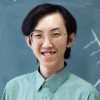
Carrollian hydrodynamics near the black hole horizon
December 8 (Thu) 16:00 - 17:30, 2022
Puttarak Jai-akson (Postdoctoral Researcher, RIKEN Interdisciplinary Theoretical and Mathematical Sciences Program (iTHEMS))
The membrane paradigm provides a fascinating bridge between gravitational dynamics near black hole horizons (null boundaries) and fluid dynamics. One question naturally follows: what type of fluids and hydrodynamics emerged at the horizon? Contrary to the longstanding belief, it turns out that the horizon fluid is Carrollian, rather than the Galilean (Navier-Stokes) fluid. The Carroll geometries and Carrollian physics, arising originally when the speed of light goes to zero (c to 0 limit), have recently gained increasing attention in the fields of black hole physics and flat holography. In this presentation, I will talk about the Carrollian limit and the resulting Carroll geometries and this unusual kind of hydrodynamics, the Carrollian hydrodynamics. I will then present the geometrical construction of the membrane (also known as the stretched horizon) in a way that a Carroll geometry manifest, therefore allowing us to spell out precisely the dictionary between gravitational degrees of freedom on the membrane and the Carrollian fluid quantities. I will also show that the Einstein’s equations projected onto the horizon are the Carrollian hydrodynamic conservation laws. Lastly, I will discuss the covariant phase space of the horizon, symmetries, and conservation laws. The talk is based on arXiv:2209.03328 and arXiv:2211.06415.
Venue: Hybrid Format (Common Room 246-248 and Zoom)
Event Official Language: English
-
Seminar
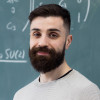
Efficient encoding of the Schrodinger equation on quantum computers
December 5 (Mon) 14:00 - 15:30, 2022
Ermal Rrapaj (Postdoctoral Researcher, RIKEN Interdisciplinary Theoretical and Mathematical Sciences Program (iTHEMS))
The continuous space Schrödinger equation is reformulated in terms of spin Hamiltonians. For the kinetic energy operator, the critical concept facilitating the reduction in model complexity is the idea of position encoding. A binary encoding of position produces a spin-1/2 Heisenberg-like model and yields exponential improvement in space complexity when compared to classical computing. Encoding with a binary reflected Gray code (BRGC), and a Hamming distance 2 Gray code (H2GC) reduces the model complexity down to the XZ and transverse Ising model respectively. Any real potential is mapped to a series of k-local Ising models through the fast Walsh transform. As a first step, the encoded Hamiltonian is simulated for quantum adiabatic evolution. As a second step, the time evolution is discretized, resulting in a quantum circuit with a gate cost that is better than the Quantum Fourier transform. Finally, a simple application on an ion-based quantum computer is provided as proof of concept.
Venue: Common Room #246-248 (Main Venue) / via Zoom
Event Official Language: English
-
Seminar
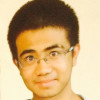
Isometric tensor networks in two dimension
October 11 (Tue) 10:30 - 12:00, 2022
Yantao Wu (Postdoctoral Researcher, RIKEN Interdisciplinary Theoretical and Mathematical Sciences Program (iTHEMS))
In this talk, I would like to explain the ansatz of isometric tensor network states (isoTNS) as candidate wavefunctions in two-dimensional condensed matter systems. I will explain how the isometric structure in 2D helps generalize many 1D tensor network algorithms, like the density matrix renormalization group and the time-evolution block decimation methods, to two dimensions. Both bosons and fermions; ground states and dynamics will be discussed. I will also explain why it is a friendly trial wavefunction in the context of variational Monte Carlo, where the sampling correlation time vanishes. I will also explain its relation to quantum error correction and how it provides an interesting playground of quantum information. If time permits, I would like to discuss some open questions about its representability of topological phases.
Venue: Common Room #246-248 (Main Venue) / via Zoom
Event Official Language: English
-
Seminar
Axion electrodynamics in neutron stars
September 27 (Tue) 14:00 - 15:00, 2022
Filippo Anzuini (Postdoc Fellow, Department of Astronomy, Monash University, Australia)
Axions are pseudo-Goldstone bosons that provide a solution to the strong CP problem, and are prominent candidates for dark matter. In neutron stars, it has been shown recently that the potential of the QCD axion acquires finite density corrections that shift the axion field expectation value, which can be large compared to the vanishing expectation value in vacuo. Such a shift leaves an imprint on typical neutron star observables such as the redshifted thermal luminosity, which can be used to constrain the axion parameter space. In this talk we focus on the coupling of axions with photons, which modifies Maxwell’s equations and alters the neutron star magnetic field. By performing state-of-the-art magneto-thermal simulations, we calculate the axion-induced perturbations to the neutron star’ magnetic field, and show that they grow on relatively short time-scales. At the same time, intense electric currents form, leading to enhanced ohmic dissipation, which increases the stars’ observable thermal luminosity. The activation of such mechanisms depends on the axion decay constant and the axion mass, two long-sought parameters at the center of several experimental and theoretical investigations. Both parameters can be constrained by comparing our simulations to observations of thermally-emitting neutron stars. The latter do not exhibit uncontrolled growth of the magnetic field that causes enhanced ohmic dissipation, allowing us to place bounds on axion parameters. Our results open a new astrophysical avenue to constrain axions, extending significantly the parameter range that can be probed with direct axion searches.
Venue: Hybrid Format (Common Room 246-248 and Zoom)
Event Official Language: English
-
Seminar
Stem cells determine complexity of hematopoiesis and immunity: A key in maintenance of homeostasis and fighting disease
July 11 (Mon) 10:00 - 11:30, 2022
Fumihiko Ishikawa (Team Leader, Laboratory for Human Disease Models, RIKEN Center for Integrative Medical Sciences (IMS))
The hematopoietic system, is a complex organ in which all cells, including white blood cells (also known as leukocytes), red blood cells and platelets originate from the hematopoietic stem cells. White blood cells/leukocytes are critical effectors of immunity. At baseline, we have about 5000-10000/microL circulating white blood cells/leukocytes, composed of more than ten distinct subsets. Among them, the most abundant (50-60%) is the neutrophil, which are capable of preventing bacterial and fungal infection. Others include T lymphocytes which attack tumors and virus-infected cells and B lymphocytes that produce immunoglobulins. Each of the leukocyte subsets have different roles in protecting us from diseases. Defects in white blood cell number or function expose us to risks of infections and tumors. Maintenance of normal homeostasis of these white blood cells is governed by expression levels of approximately 20,000 genes in hematopoietic stem cells. In this presentation, first, I will discuss current understanding of a hierarchical system of stem cells generating many different kinds of leukocytes. Second, I will talk about leukemia, a cancer of white blood cells, in which critical genes are hit by mutations, resulting in a loss or gain of function of those genes in stem cells. Third, I would like to discuss with the iTHEMS scientists potential approaches by which we can collaborate to understand the normal and diseased human blood/immune systems.
Venue: Hybrid Format (Common Room 246-248 and Zoom)
Event Official Language: English
38 events
Events
Categories
series
- iTHEMS Colloquium
- MACS Colloquium
- iTHEMS Seminar
- iTHEMS Math Seminar
- DMWG Seminar
- iTHEMS Biology Seminar
- iTHEMS Theoretical Physics Seminar
- Information Theory Seminar
- Quantum Matter Seminar
- ABBL-iTHEMS Joint Astro Seminar
- Math-Phys Seminar
- Quantum Gravity Gatherings
- RIKEN Quantum Seminar
- Quantum Computation SG Seminar
- Asymptotics in Astrophysics Seminar
- NEW WG Seminar
- GW-EOS WG Seminar
- DEEP-IN Seminar
- ComSHeL Seminar
- Lab-Theory Standing Talks
- Math & Computer Seminar
- GWX-EOS Seminar
- Quantum Foundation Seminar
- Data Assimilation and Machine Learning
- Cosmology Group Seminar
- Social Behavior Seminar
- QFT-core Seminar
- STAMP Seminar
- QuCoIn Seminar
- Number Theory Seminar
- Berkeley-iTHEMS Seminar
- iTHEMS-RNC Meson Science Lab. Joint Seminar
- Academic-Industrial Innovation Lecture
- RIKEN Quantum Lecture
- Theory of Operator Algebras
- iTHEMS Intensive Course-Evolution of Cooperation
- Introduction to Public-Key Cryptography
- Knot Theory
- iTHES Theoretical Science Colloquium
- SUURI-COOL Seminar
- iTHES Seminar
